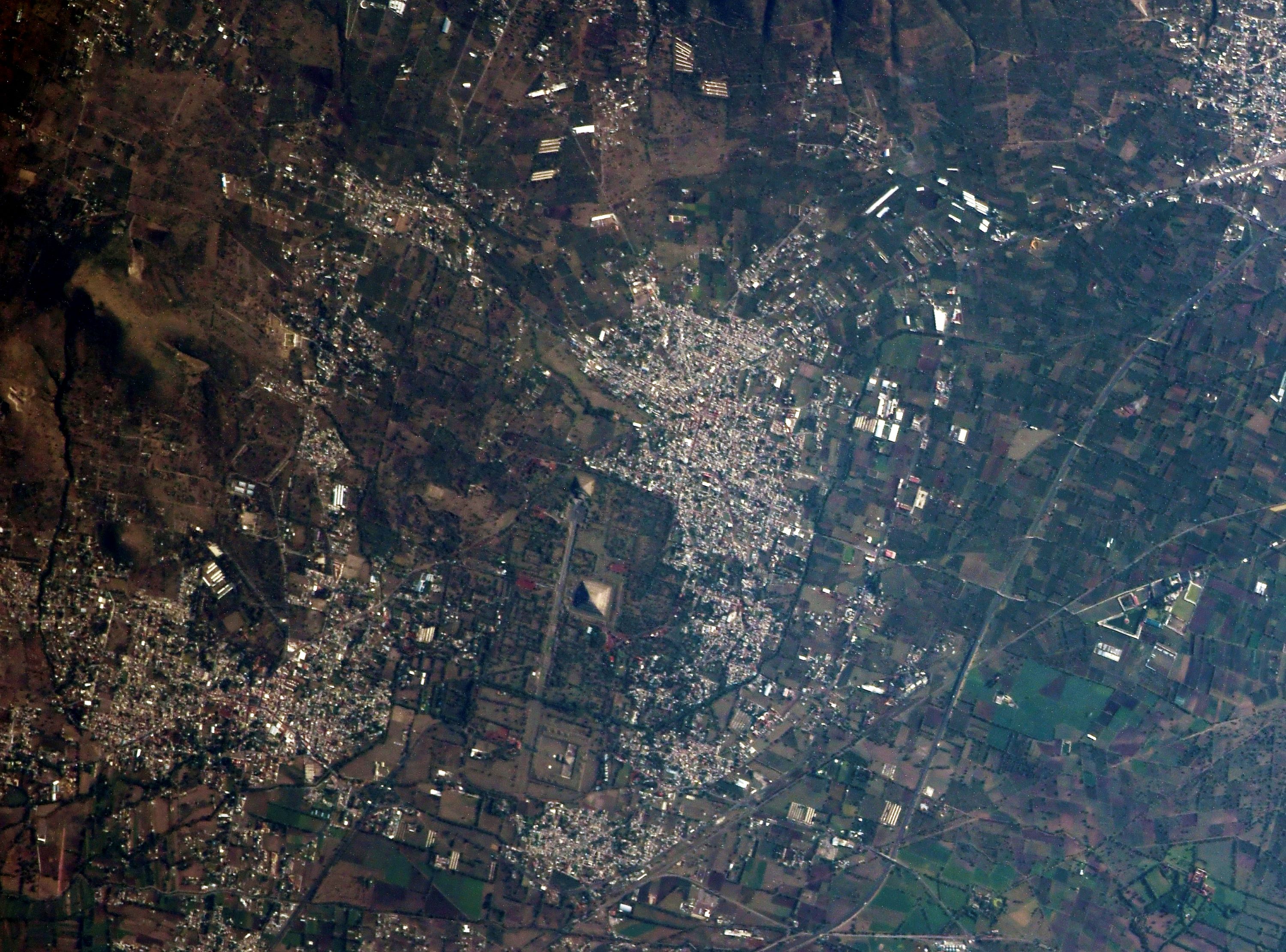[:ja]イワン・ワグナー宇宙飛行士がISSから撮影したメキシコのテオティワカン遺跡です。

テオティワカンは、メキシコの首都メキシコシティ北東約50kmの地点にあり、紀元前2世紀から6世紀まで繁栄した、テオティワカン文明の中心となった巨大な宗教都市遺跡です。当時のアメリカ大陸では最大規模を誇り、メソアメリカの中心的都市として機能していました。テオティワカン人の宇宙観、宗教観を表す極めて計画的に設計された都市で太陽のピラミッド、月のピラミッドそして南北5キロにわたる道(「死者の大通り」)が基点となり各施設が配置されています。規模から考えると神権的な権威が存在し、高度に階層が分化し、発達した統治組織があったものと推測されています。古代都市テオティワカンとして、1987年に世界遺産(文化遺産)に登録されています。
地上の様子はこちらです。

参考文献: Ivan Vagner’s Tweet
地球俯瞰画像を見る: LiVEARTH
[Earthview Wonders] No.1045: Teotihuacan🇲🇽
Astronaut Ivan Vagner captured from ISS Teotihuacan, Mexico.

Teotihuacan is an ancient Mesoamerican city located in a sub-valley of the Valley of Mexico, which is located in the State of Mexico, 50km northeast of Mexico City. Teotihuacan is known today as the site of many of the most architecturally significant Mesoamerican pyramids built in the pre-Columbian Americas. At its zenith, perhaps in the first half of the first millennium CE, Teotihuacan was the largest city in the pre-Columbian Americas, with a population estimated at 125,000 or more, making it at least the sixth-largest city in the world during its epoch. After the collapse of Teotihuacan, central Mexico was dominated by the Toltecs of Tula until about 1150 CE. The site was designated a UNESCO World Heritage Site in 1987.
The local scenery on the ground is as follows.

Reference: Ivan Vagner’s Tweet
See earthview photo gallery: LiVEARTH[:en][Earthview Wonders] No.1045: Teotihuacan🇲🇽
Astronaut Ivan Vagner captured from ISS Teotihuacan, Mexico.

Teotihuacan is an ancient Mesoamerican city located in a sub-valley of the Valley of Mexico, which is located in the State of Mexico, 50km northeast of Mexico City. Teotihuacan is known today as the site of many of the most architecturally significant Mesoamerican pyramids built in the pre-Columbian Americas. At its zenith, perhaps in the first half of the first millennium CE, Teotihuacan was the largest city in the pre-Columbian Americas, with a population estimated at 125,000 or more, making it at least the sixth-largest city in the world during its epoch. After the collapse of Teotihuacan, central Mexico was dominated by the Toltecs of Tula until about 1150 CE. The site was designated a UNESCO World Heritage Site in 1987.
The local scenery on the ground is as follows.

Reference: Ivan Vagner’s Tweet
See earthview photo gallery: LiVEARTH[:]